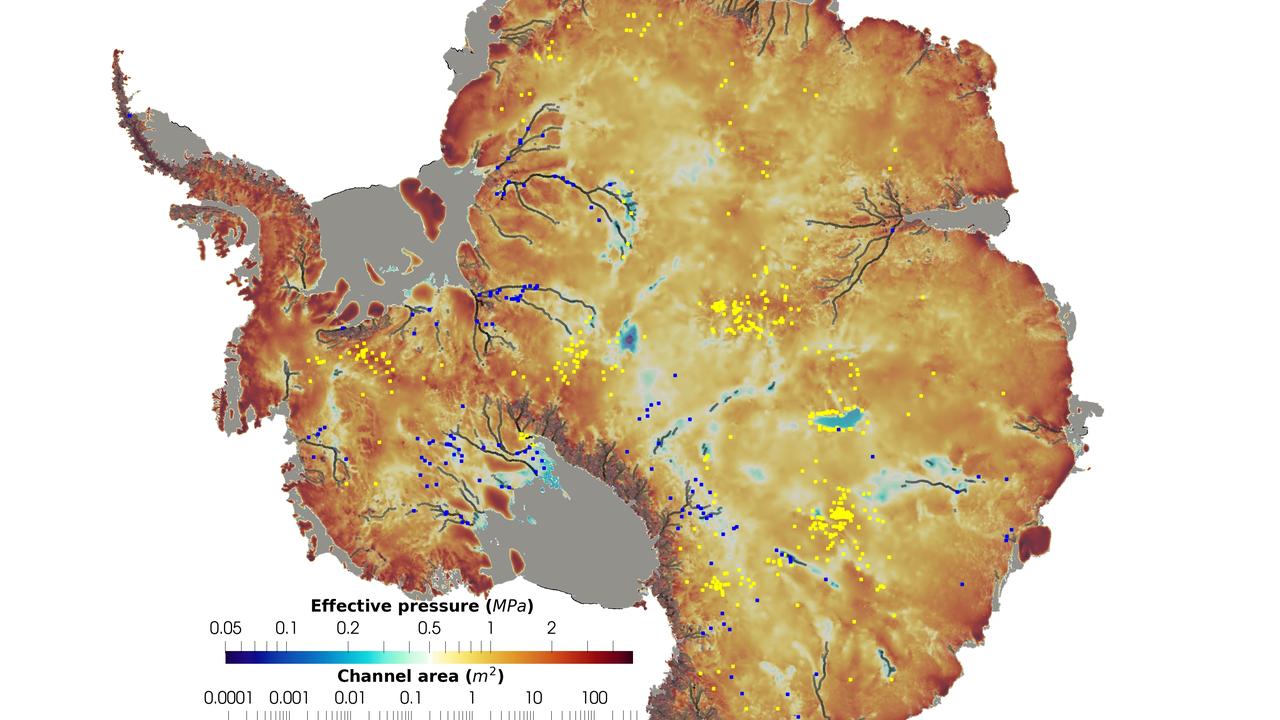
Antarctica could be heading towards melting "tipping points" faster than thought, according to a study examining little-understood hidden water flows.
The frozen continent is losing ice at an increasing rate with some studies suggesting parts will reach likely irreversible melting points by the end of the century.
Recently published research says such points could arrive much earlier, as soon as 2050, because current models fail to fully consider subglacial water.

Streams of subglacial water come from meltwater at the top of the glacier and liquefy at the base where the ice grinds against the bedrock.
This water can lubricate the ice, allowing it to slide more rapidly toward the ocean.
Australian Antarctic Program Partnership's Chen Zhao was part of an international study that included subglacial water information in ice sheet simulations.
They found subglacial water can triple ice discharge and failing to properly take it into account could result in an underestimation of global sea-level rises by two metres by 2300.

Dr Zhao stressed more data was needed to better understand subglacial water and verify the simulations.
"(The results were) kind of a big surprise to me," she said.
"We know ... subglacial water can enhance the (ice) sliding but we didn't expect such a huge difference.
"The outcome of this model is very scary but it doesn't mean we have lost our time window.
"If we take immediate (climate) action now we still have a chance to delay the ... tipping point."

The study used two computer models, one of ice sheet flow and one to predict subglacial water production and flow, in various scenarios.
This is not the first research to raise concerns - a 2024 paper by the British Antarctic Survey also examined the role of subglacial water.
The study modelled how warmer seawater seeps between the land and ice, finding projections of sea level increases could be significant underestimates.
More than 140 active subglacial lakes have been identified beneath Antarctica over the past two decades but vast regions, particularly the east, remain unexplored.
Dr Chen, lead author of the study published in the journal Nature Communications, said it was very challenging to get data from areas sometimes kilometres deep.
The study's authors say more investment is needed to obtain crucial information.
An extra two-metre sea level rise would potentially displace millions of people, they say.







